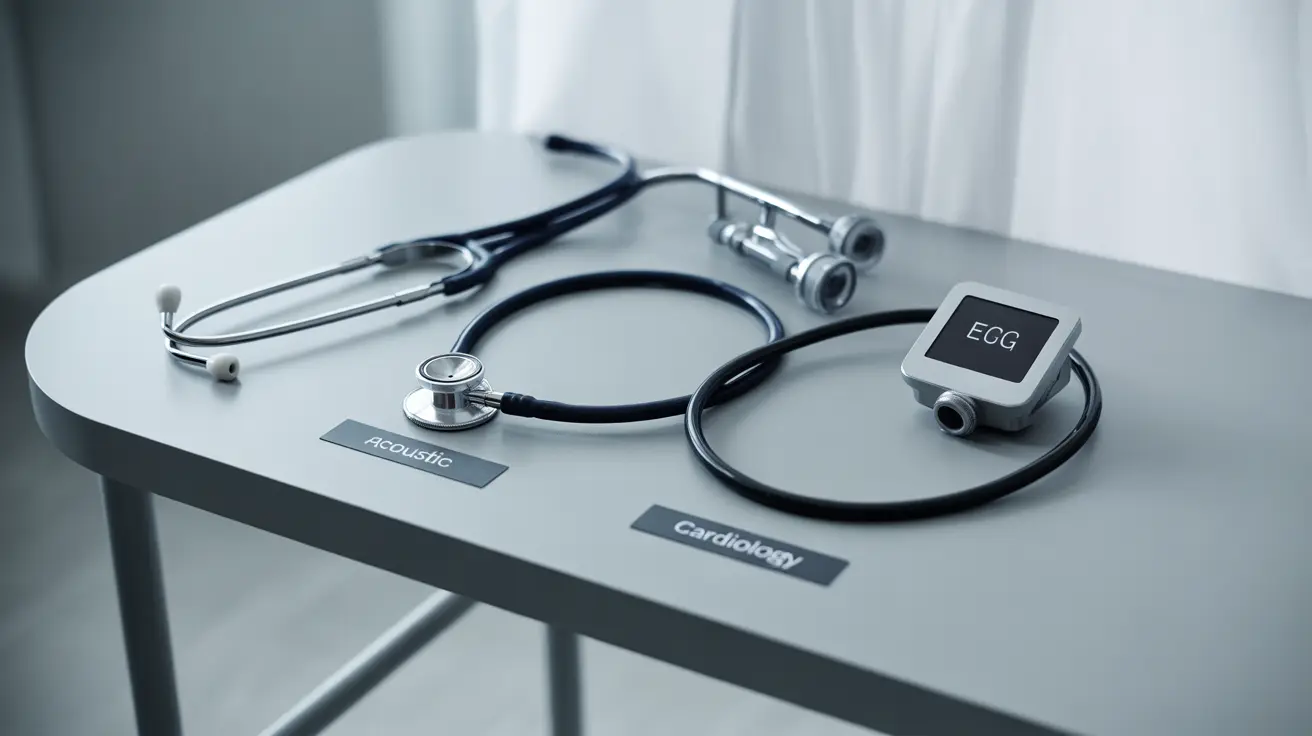Choosing the best stethoscope is a crucial decision for healthcare professionals, as it directly impacts patient care quality and diagnostic accuracy. Whether you're a seasoned physician, nurse, or medical student, understanding the key features and differences between various stethoscope options can help you make an informed decision that suits your specific needs and budget.
In this comprehensive guide, we'll explore the various types of stethoscopes available, their unique features, and how to select the right one for your medical practice. We'll also cover maintenance tips and budget-friendly options to help you make the best investment in your medical equipment.
Types of Stethoscopes and Their Applications
Understanding the different types of stethoscopes available is essential for making an informed purchase decision. Each type serves specific medical purposes and offers unique advantages.
Acoustic Stethoscopes
Traditional acoustic stethoscopes remain the most widely used type in medical practice. They offer reliable performance, require no batteries, and provide excellent sound quality for most clinical applications. Key features include:
- Dual-head chest pieces (diaphragm and bell)
- Various tubing lengths and materials
- Different ear tip options for comfort
- Adjustable pressure sensitivity
Digital Stethoscopes
Digital stethoscopes incorporate advanced technology to enhance auscultation capabilities. These devices are particularly useful in challenging environments or for teaching purposes. Notable features include:
- Sound amplification capabilities
- Noise reduction technology
- Recording and playback functions
- Bluetooth connectivity for sharing recordings
- Visual display of sound waves
Specialized Stethoscopes
Some medical professionals require specialized stethoscopes designed for specific applications:
- Pediatric stethoscopes with smaller chest pieces
- Cardiology stethoscopes with enhanced acoustics
- Teaching stethoscopes with dual headsets
- Lightweight designs for extended use
Factors to Consider When Choosing a Stethoscope
Sound Quality
The acoustic performance of a stethoscope is paramount. Consider factors such as:
- Frequency response range
- Ambient noise reduction
- Tubing quality and design
- Chest piece construction
Durability and Build Quality
A well-built stethoscope should last for years with proper care. Look for:
- High-quality materials
- Warranty coverage
- Replacement parts availability
- Robust construction
Comfort and Ergonomics
Since you'll be using your stethoscope frequently, comfort is essential:
- Lightweight design
- Adjustable headset
- Comfortable ear tips
- Appropriate tubing length
Maintaining Your Stethoscope
Proper maintenance ensures optimal performance and longevity of your stethoscope. Regular cleaning and careful handling are essential for maintaining both hygiene and functionality.
Cleaning and Sanitization
Implement these cleaning practices:
- Clean with alcohol-based wipes after each patient
- Regularly inspect for damage
- Store in a protective case
- Replace worn components as needed
Frequently Asked Questions
What are the best stethoscopes for doctors and nurses, and how do they compare in terms of sound quality and durability?
The best stethoscopes for medical professionals typically come from established manufacturers and feature high-quality acoustic performance and durable construction. Top models offer superior sound clarity, comfortable ear tips, and reliable tubing that resists cracking. Cardiology-grade stethoscopes generally provide the best sound quality but come at a higher price point.
How do I choose the right stethoscope for my specific medical needs, whether it's for general practice or specialized care like pediatrics?
Consider your primary patient population and typical clinical scenarios. For pediatrics, choose a stethoscope with a smaller chest piece. For cardiology, select a model with enhanced acoustic performance. General practitioners should opt for versatile models that perform well across various applications while maintaining good sound quality.
What are the differences between digital and acoustic stethoscopes, and which is more suitable for noisy environments?
Digital stethoscopes offer sound amplification, noise reduction, and recording capabilities, making them ideal for noisy environments. Traditional acoustic stethoscopes provide reliable performance without requiring batteries but may struggle in loud settings. Digital models are typically more expensive but offer additional features that can enhance diagnostic capabilities.
Are there any affordable, high-quality stethoscope options available for medical students or those on a budget?
Several manufacturers offer quality entry-level stethoscopes that provide good acoustic performance at a reasonable price point. While these models may not have all the features of premium versions, they're suitable for learning and basic clinical use. Look for models from reputable brands that offer good warranty coverage.
How do I properly maintain and clean my stethoscope to extend its lifespan and ensure hygiene?
Clean your stethoscope after each patient contact using alcohol-based wipes or sanitizing solutions. Avoid excessive heat exposure and harsh chemicals. Regularly inspect tubing for damage, replace ear tips when worn, and store the stethoscope in a protective case. For digital models, follow manufacturer guidelines for battery maintenance and software updates.




